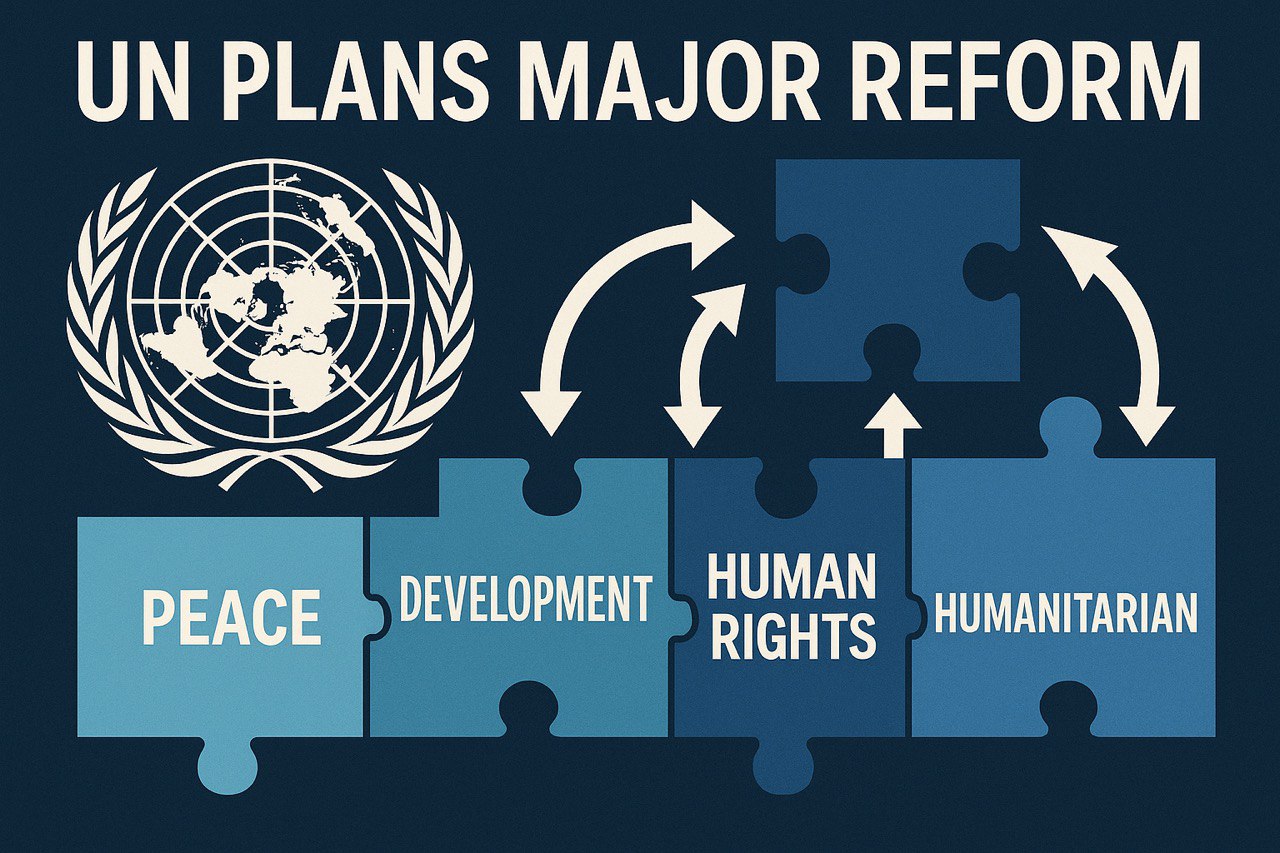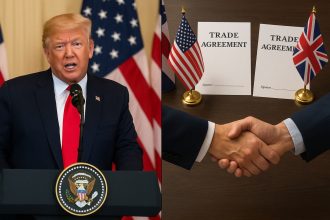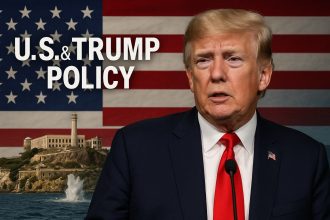The United Nations, established to foster international cooperation, is currently navigating a critical financial crisis that threatens its operational capacity. As of May 5, 2025, reports indicate that the UN is preparing for a large-scale reform due to budget constraints, driven by funding shortfalls and cuts, particularly from major donors like the United States under President Donald Trump’s administration. This reform is seen as a response to the organization’s need to adapt to financial realities while maintaining its mandate for peace, humanitarian aid, and sustainable development.
The financial strain has been highlighted by statements from UN officials. For instance, Canadian ambassador Bob Rae, president of the U.N.’s Economic and Social Council, noted that “The cuts are having an immediate, devastating impact,” underscoring the urgency of the situation. Similarly, UN Secretary-General António Guterres, in a 2017 conversation with Trump, described the UN’s structures as “fragmented,” with “byzantine procedures” and “endless red tape,” emphasizing the need for structural reform.
Proposed Reform Details
The core of the proposed reform involves consolidating the UN’s numerous agencies and programs into four main directions: peace and security, humanitarian issues, sustainable development, and human rights. This restructuring aims to reduce overlap and duplication, enhancing efficiency. Specific measures include:
• Agency Mergers: A significant aspect is the merger of operational agencies into a single humanitarian body. This includes the World Food Programme, UNICEF, WHO, and UNHCR, aiming to create a more coordinated response to global crises. This consolidation is likened to combining tools into a versatile Swiss Army knife, potentially improving aid delivery.
• Personnel Streamlining: The reform also proposes reducing duplicating functions and relocating staff from expensive cities like Geneva and New York to lower-cost areas. This cost-saving measure is intended to optimize resource allocation, but it raises concerns about staff morale and potential talent loss.
The reform process is in its early stages, with an internal memo, labeled “strictly confidential,” outlining these suggestions. UN spokesman Stéphane Dujarric clarified that the memo is part of an exercise to generate ideas from senior officials to align with Guterres’ vision for a more efficient UN. Final proposals are scheduled to be presented by May 16, 2025, indicating a tight timeline for decision-making.
Implications and Potential Impacts
The implications of this reform are multifaceted. On the positive side, a streamlined UN could respond faster and more effectively to global challenges, such as natural disasters or conflicts, by improving coordination among agencies. For example, having all humanitarian aid organizations under one roof could lead to quicker, more cost-effective solutions, especially in developing countries where local actors often have a better understanding of community needs.
However, there are potential downsides. Merging agencies might lead to a loss of specialized focus or expertise, as each organization currently has its own culture and methods. This could be compared to mixing different paint colors, where the result might lose the vibrancy of the originals. Additionally, relocating staff could disrupt operations and affect morale, potentially leading to talent drain, especially if moving from a city like New York to a less expensive location is not well-received.
The reform also faces controversy regarding its impact on the UN’s global representation and effectiveness. While cost-saving measures are necessary, there is debate over whether these changes will compromise the UN’s ability to address complex, specialized issues, particularly in peace and security or human rights.
This reform isn’t just about budgets—it’s about the UN’s ability to lead on global issues. If it works, we might see a more agile organization, ready to tackle climate change, conflicts, and poverty with fresh energy. But if it flops, the UN could lose credibility, leaving vulnerable communities in the lurch. I keep thinking about that conference room, where despite the chaos, there was hope. Will this reform keep that hope alive?
The outcome hinges on member states’ support. Some might push back, worried about reduced influence or diluted missions. As a journalist, I’ve seen how politics can derail good intentions, and I’m crossing my fingers that doesn’t happen here.
Speaking of financial challenges, I recently chatted with a colleague who’s been exploring trading platforms to manage personal finances. She mentioned PocketOption, praising its user-friendly interface for navigating markets. It’s a reminder that, just as the UN seeks smarter financial strategies, individuals are also finding tools to adapt to economic shifts. I’m no trader, but I’m intrigued by how such platforms could empower people in uncertain times.
Reflecting on my time covering the UN, I’m torn. That conference showed me the organization’s heart—people genuinely wanting to make a difference. But it also revealed its flaws: too many cooks in the kitchen. This reform could be the shake-up the UN needs, like a good spring cleaning. Yet, I can’t shake the worry that in trying to save money, they might lose what makes each agency special. It’s like choosing between a cluttered home and a sterile one—neither feels quite right.
What’s Next?
As we approach the May 16 deadline, the world is watching. Will the UN emerge stronger, or will this be a cautionary tale of overambition? I’d love to hear your thoughts. Do you think this reform will streamline global aid, or are we risking too much? Drop a comment below and let’s chat about the future of the UN. After all, in a world full of challenges, we need a United Nations that’s ready to rise to the occasion.





